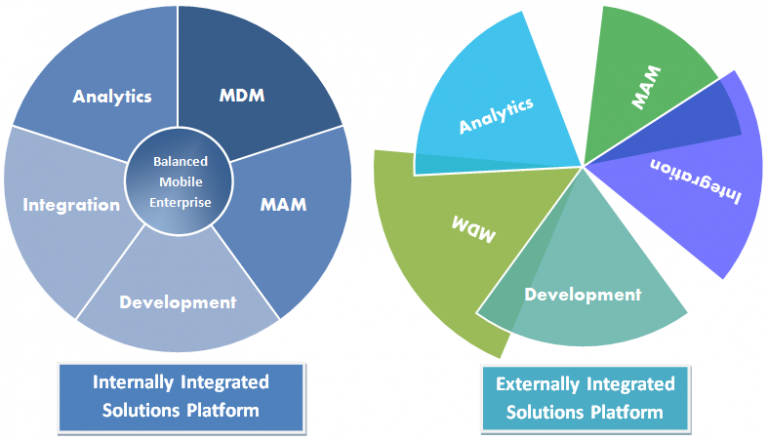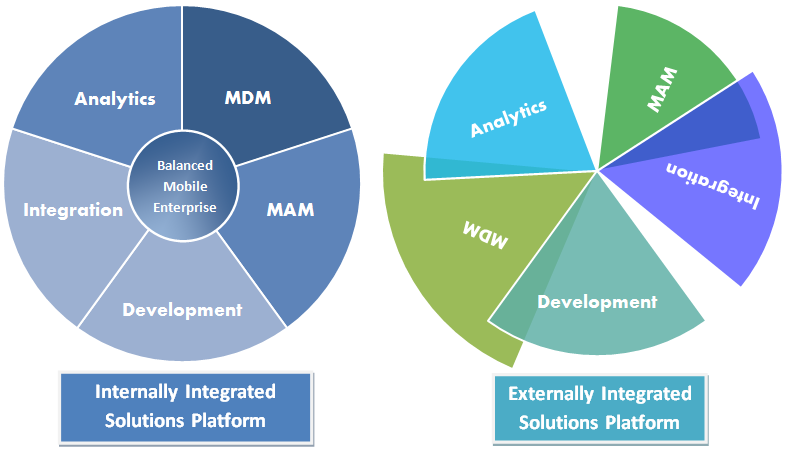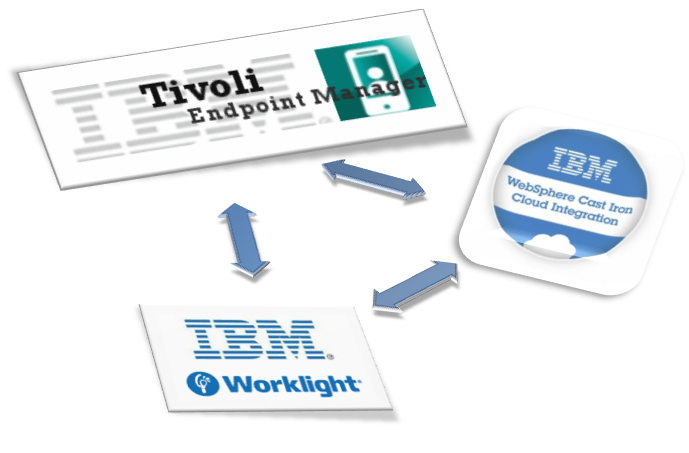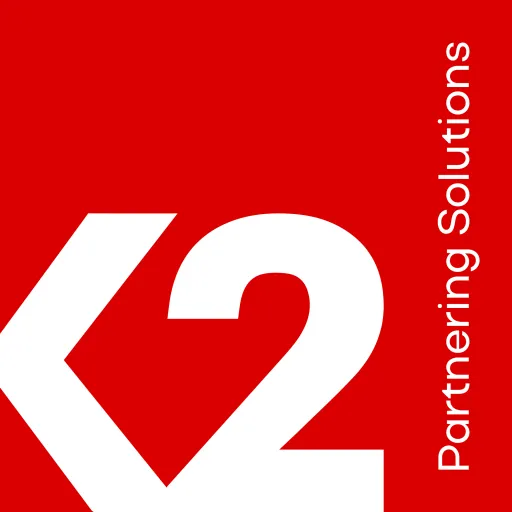by Harry Ho
Balance is Integration.
With the growth of mobility, more and more solutions will become available to enterprises seeking answers. However, like many industries, each solution may vary in its capability, quantity, and quality. Lately, there seems to be a growing number of provisioning for mobile enterprise. However, understanding how they differ can help you make the right choice.
Utilizing an Internally Integrated Solutions Platform (IISP), like IBM Mobile Foundation, helps build a balanced mobile enterprise where features are clearly communicated amongst each other. It utilizes a purposefully designed integration process to help meet various mobile enterprise needs. On the opposite spectrum, chaining together distant resources and creating an Externally Integrated Solutions Platform (EISP) could leave issues like feature gaps and overlap redundancy. Cross-blending resources could potentially cause long-term issues when adding or changing various links.
IBM has consistently proven its leveraged capabilities to integrate and scale, and the IBM Mobile Foundation has added to this legacy. Providing a system that reaches and communicates across various channels is important in the mobile space. Having one that works well within itself and other frameworks is important. Integration is what keeps things moving with fluidity. Balance is integration.
Integration is Growth.
From beginning to end, the IBM Mobile foundation provides an overall package that meets what many others cannot alone. You would have to package, for example, Appcelerator Titanium with their various partners to really provide the benefits of what the Mobile Foundation could provide.
To be fair, they do have some appealing features, but many of which can be seen in IBM Worklight and Mobile Foundation. When comparing just development environments, *Titanium Studio is a stand-alone Eclipse based IDE that can do cross-platform development — be it in Android, iOS, Blackberry, and HTML5 web apps. It utilizes a proprietary Titanium SDK with extensible capabilities. However, IBM Worklight is similar — just with a little more flair.
IBM Worklight utilizes an open-standards environment based framework which can be extended by runtime-skins, Apache Cordova, and various third-party libraries. Whenever you need to add new device support, you can easily declare new environments like Android, iOS, Windows Phone, mobile web apps, Mac OS X Dashboard, Blackberry, and various others. The stand-alone studio (or optional Eclipse plug-in) builds the necessary components with the code you write, and delivers them in a native-build-ready resource. To take them even deeper, you can utilize the optimization framework to help detect the difference between, for example, an Android phone and tablet during the device runtime. You can customize the look and feel of each one to help spread-load your application to the many versions of Android hardware (or other devices).
Appcelerator does leverage its SAP partnership and integration with its Sybase Unwire. At the time of writing, there is limitation on Appcelerator connectivity with SAP applications, but SAP plans on better integration later this year. However, IBM Worklight has already provided integration to your various back-end services utilizing the Worklight server adapters. Outside of the other two built in HTTP (SOAP and RESTful) and SQL adapters, there is a WebSphere CastIron adapter. WebSphere CastIron provides enterprise and cloud connectivity to over 200 application types. As part of the IBM Mobile Foundation, it provides scalable solution to many different enterprises services including SAP connectivity. Adapting and integrating new aspects of technology can help meet the needs of a growing business. Integration is growth.
Growth is Success.
In any competition, there will similarities and differences. Understanding what makes each player stand out is integral in realizing how they create visibility in business intelligence and support heavy decision making. Balancing various aspects of technology and building the communication between them is an important step in growth. The IBM Mobile foundation takes on the necessary niche as an IISP by providing integration that works. It is a MEAP framework that produces success. It helps you build assets you may not have. It eases integration with what you do. It is a solution that grows as you grow your mobile strategy. Why is that good? It is because growth is success.
*at the time of writing, there is no Titanium Studio plug-in for Eclipse. Developers must use the stand-alone IDE.
For questions please email me at HarryH@www.open-logix.com, leave a comment, or give us a call.






